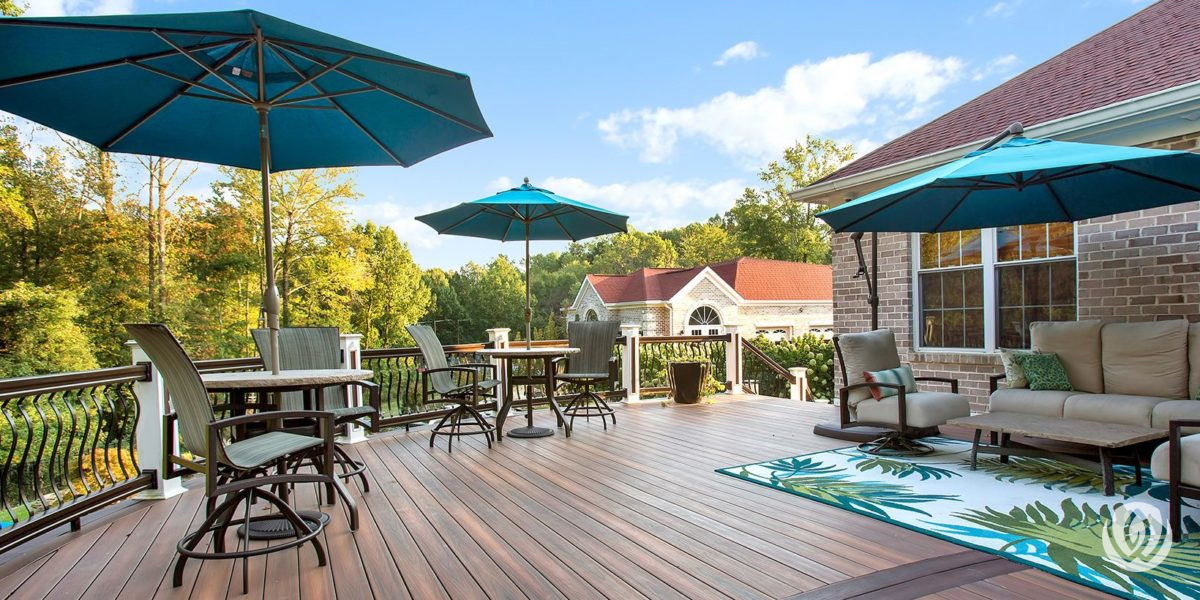
Thinking of building a deck? Adding a deck to your home is a great way to extend your living room and bring it outside. A deck can also be a great gathering space not only during the warmer months, but also during the Fall.
Still, before you get started, check out this list of five things you should consider before you build a deck or hire someone to do it for you.
Before you pick out materials or think about where you want to put your deck, first think about how you want to use it. Will you use it primarily as an entertainment space? Do you want to have large gatherings or will it be an extended dining area for you and your family? Do you want an area that's primarily used for relaxing?
Here are some other things to think about:
As you can see, how you plan to use your deck is important, so give it some thought first. Grab a notebook or use an app like Evernote or One Note to capture all your ideas. Then, rank them in order of importance. Remember, you can also clip any pictures that you find and save them in your online or paper notebook.
Choosing materials for your new deck can be fun, but there are several options so try to narrow things down a bit. Remember, for every option, there'll always be a pro and a con so make selections that you can live with and enjoy in the long run.
For example, you could use composite decking. It's lovely and holds up well in harsh weather but it can also get pretty hot to the touch after getting heat from the sun. The same goes for vinyl rails. You might also choose pressure-treated wood or Brazilian hardwood. Wood certainly has a natural beauty to it but should be stained or sealed in order to prolong its life.
Here are some of the various types of materials commonly used:
There are a number of customization options like custom rail posts, underdeck ceilings, beam and post wraps, and more. The only limit is your imagination!
When you think of building a deck, think about whether or not you will need access from it. Some homeowners want their deck to be inaccessible from the ground for security purposes and will not even add steps. Keep in mind that the flow of the area will be affected when the steps are placed leading off the deck. For example, you wouldn't want a chair from a dining table to cut off access.
Depending on the size and type, steps can take up a bit of space or block your view from below the deck. A spiral staircase can be used in a tight space and is not as visually intruding. If you'd like to create a patio space where the steps exit the deck, you will need to ensure that the step heights will match up with this space.
So, whether you install the deck yourself or use a licensed contractor, be sure to figure out if steps are needed and how many will need to be installed.
Investigating code restrictions is not the most exciting part of building a deck but it is a very important one. So, grab your plat (it should be with the papers you received when you first purchased your home) or contact your county clerk's office to find out if there are any lot restrictions for your property. These restrictions may impact where the deck gets installed. Your landscaping professionals can help you figure this out as well.
And, for those of you that have a Home Owners' Association (HOA), you'll need to check with them, too, as they will likely have specific material and color guidelines that you must follow.
Last but certainly not least, think about how much you want to invest in your new deck. Keep in mind that the cost to build a deck can range widely depending on the options and materials you choose. Your budget can also be impacted by the way your deck is built by the design and build firm you decide to hire.
For example, with the LiveWell Outdoors building process, we ensure that the footers go down to virgin soil. We also exceed code by using bigger framing (to keep the deck more rigid) and use larger beams below the deck to make the space more usable. Taking these measures will increase the cost and give you a long-lasting deck to enjoy for years to come.
